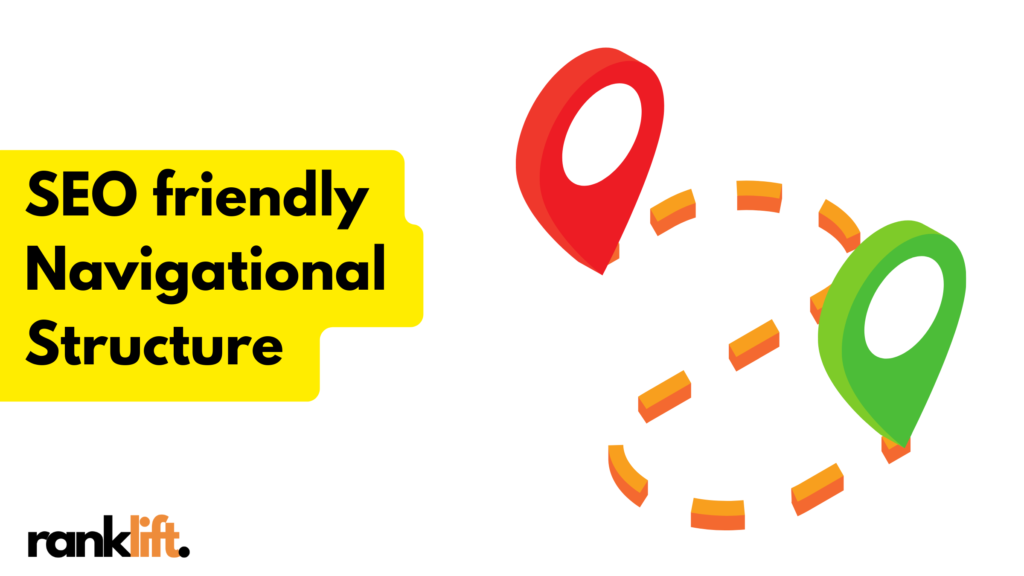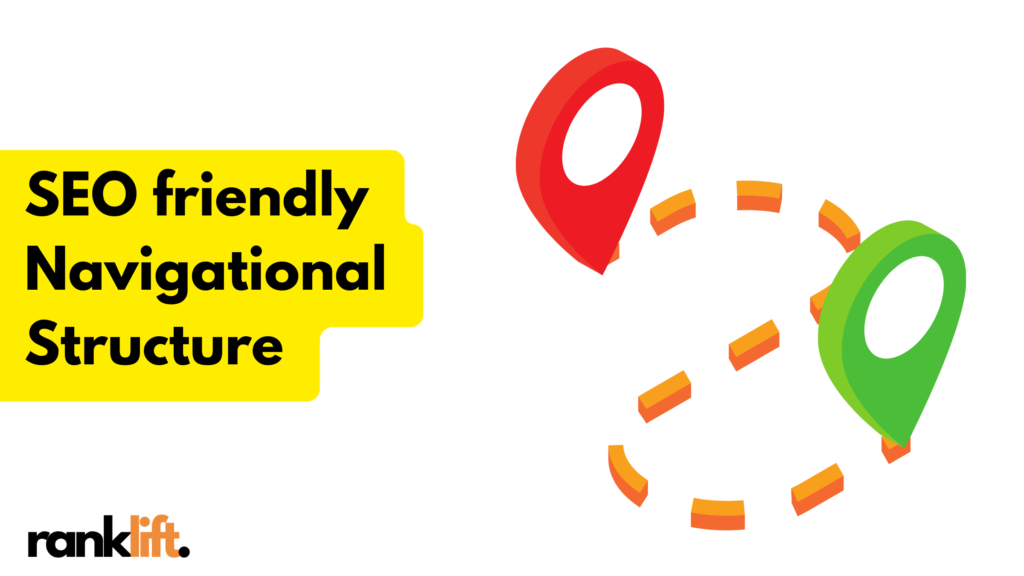Introduction
In the fiercely competitive realm of e-commerce, crafting an SEO-friendly navigational structure for your website is paramount to unlocking the gates of success. A well-structured navigation not only bolsters your site’s user experience but also serves as a beacon, guiding search engines towards your virtual doorstep. Embrace this comprehensive guide as your compass, steering you through the intricacies of creating a navigational structure that resonates with both users and algorithms alike.

The Role of SEO in Ecommerce Growth
SEO, the acronym that stands for Search Engine Optimization, holds the key to unlocking the gateway of organic traffic, propelling your e-commerce site to the forefront of search engine result pages (SERPs). By adhering to SEO principles, you augment your site’s visibility, attracting a steady stream of potential customers who are actively seeking products or services akin to yours. Ultimately, SEO serves as the cornerstone of your e-commerce empire, driving sales and propelling your business towards new heights of success.
Understanding Navigational Structure
Envision your e-commerce site as a labyrinth, where every twist and turn leads to a treasure trove of products and information. The navigational structure serves as the map, guiding users through this intricate maze, ensuring they effortlessly find what they seek. A well-organized structure not only enhances user experience, keeping visitors engaged and satisfied, but also plays a pivotal role in SEO, enabling search engines to effortlessly crawl and index your site’s content.
Key Components of SEO-Friendly Navigation
- Intuitive Layout: Craft a navigational structure that mirrors the thought process of your customers. Categorize products logically, ensuring that related items are grouped together, and employ user-friendly labels that resonate with your target audience.
- Clear Headings: Utilize descriptive and keyword-rich headings to introduce each section of your site. Headings serve as signposts, guiding users and search engines alike, providing a clear understanding of the content that lies beneath.
- Optimized URL Structure: Design URLs that are both human-readable and search engine-friendly. Incorporate relevant keywords, ensuring that they accurately reflect the content of the corresponding page.
Keyword Strategy for Navigational Elements
- Keyword Research: Delve into the minds of your target audience, unearthing the keywords they employ when searching for products or services like yours. Utilize keyword research tools to identify high-volume, relevant keywords that align with your business objectives.
- Strategic Placement: Integrate your chosen keywords seamlessly into your navigational elements, such as category names, product titles, and meta descriptions. By strategically positioning keywords, you boost your site’s relevance, making it more likely to appear in search results.
Architecting Your Site Hierarchy
- Keyword-Driven Structure: Craft your site’s hierarchy based on keyword research and user behavior. Position high-priority keywords in prominent sections of your navigation, ensuring they receive the visibility they deserve.
- Logical Flow: Create a logical flow of information, guiding users from broad categories to specific products. This intuitive structure mirrors the thought process of your customers, facilitating a seamless shopping experience.
Enhancing Usability through Navigation Design
- Mobile-First Approach: In the era of smartphones and tablets, a mobile-friendly navigation design is non-negotiable. Prioritize the mobile experience, ensuring your navigation adapts seamlessly to various screen sizes, providing an intuitive and user-friendly interface.
- Visual Cues: Employ visual cues, such as icons and images, to enhance the usability of your navigation. Visual elements break the monotony of text, guiding users through your site’s hierarchy and adding a touch of visual appeal.
Technical SEO and Navigation
- XML Sitemap: Create an XML sitemap, acting as a blueprint of your website’s structure. Submit this sitemap to search engines, ensuring they can effortlessly crawl and index all of your site’s pages, including those buried deep within your navigation.
- Internal Linking: Craft a web of internal links, connecting various pages within your site. This strategic linking not only aids in spreading link equity throughout your site but also guides users to relevant content, enhancing their overall experience.
Monitoring and Optimizing Navigation
- Analytics: Utilize analytics tools, such as Google Analytics, to track user behavior and glean insights into how visitors interact with your site’s navigation. Analyze metrics like click-through rates and bounce rates to identify areas for improvement.
- A/B Testing: Experiment with different navigation designs and layouts through A/B testing. By presenting users with variations of your navigation, you can gather data-driven insights, determining which version resonates best with your audience.
Avoiding Common Navigation Mistakes
- Overcrowded Navigation: Resist the urge to cram every conceivable link into your navigation. A cluttered navigation overwhelms users, making it challenging to find what they seek. Strive for a concise and focused navigation, featuring only the most essential categories and links.
- Inconsistent Design: Maintain a consistent design aesthetic throughout your navigation. Avoid abrupt changes in font, color, or style, as these inconsistencies can confuse and disorient users.
Implementing Advanced Navigational Strategies
- AI-Powered Search: Elevate the user experience by integrating an AI-powered search bar. This feature empowers users to effortlessly find what they seek, even if they don’t know the exact category or product name.
- Personalized Recommendations: Leverage the power of personalization to tailor the navigation experience for each user. Based on their browsing history and preferences, display relevant product recommendations and personalized offers, enhancing their shopping journey.





Comments